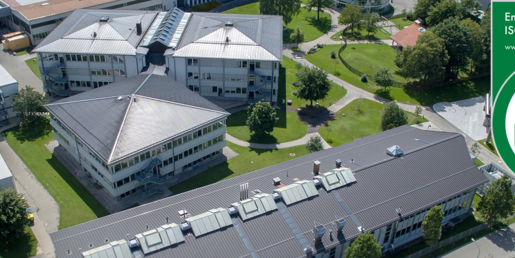BOPET films for a Circular Economy
23 Jun 2020
The future of BOPET films is promising
All over the world, BOPET films (biaxially oriented polyester) are a highly esteemed material for various applications – with every right to be. In technical applications such as solar panel back sheets, optical film grades, insulations, printed circuits or sequin films their excellent mechanical characteristics, brilliantly clear nature or high temperature stability are unbeaten. For a wide range of packaging solutions, more properties come on top: high barrier features, a good surface treatment suitability or an excellent stiffness, to name only a few.
To make BOPET films also fit for the upcoming Circular Economy, raw material suppliers, Brückner Maschinenbau as the leading solution supplier for the production of such films, film producers (among them many Brückner customers), converters and brand owners are actively following various approaches.
R-PET Films
Trials on the Brückner laboratory line clearly showed that post-consumer waste recylate PET can be added to the virgin material in a proportion of 50% and even above without any losses in quality: optics, mechanics and the dimensional stability are absolutely comparable to 100% virgin BOPET. Using certified bottle flakes which are fully food contact approved, the manufactured film is ready for a circular economy and furthermore reduces the carbon footprint. A Brückner customer in India also already made good experiences with “r-BOPET” films.
Sealable BOPET film
PET in general is not known for the very best sealing properties. Members of the PET value chain, as well as Brückner Maschinenbau, are currently developing measures to change exactly this. An exemplary application for such sealable mono (BO)PET films could be lidding film for a wide variety of thermoformed PET trays and containers or several overwraps in food packaging: a perfect match for easy sortability and recyclability.
Other efforts within the industry: “Green” PET films containing bio-ethanol from renewable agro inputs, showing the same properties as conventional BOPET films. Ever thinner BOPET films down to 10, 8 and even 6.5 µm, providing significant raw material savings and a much lower carbon footprint.
Conclusion
The future of BOPET films in an upcoming circular economy is promising. There are commercial case studies available, demonstrating that even PET based mixed plastic laminates can be recycled. Mono BOPET packaging will play an important role, due to the “best in class” position that PET has in both mechanical and monomer recycling (chemical). And: It is a fact, that the material properties of BOPET film offer the only option to balance resource and processing efficiency with the ability to incorporate food contact approved recycled content over multiple cycles.












